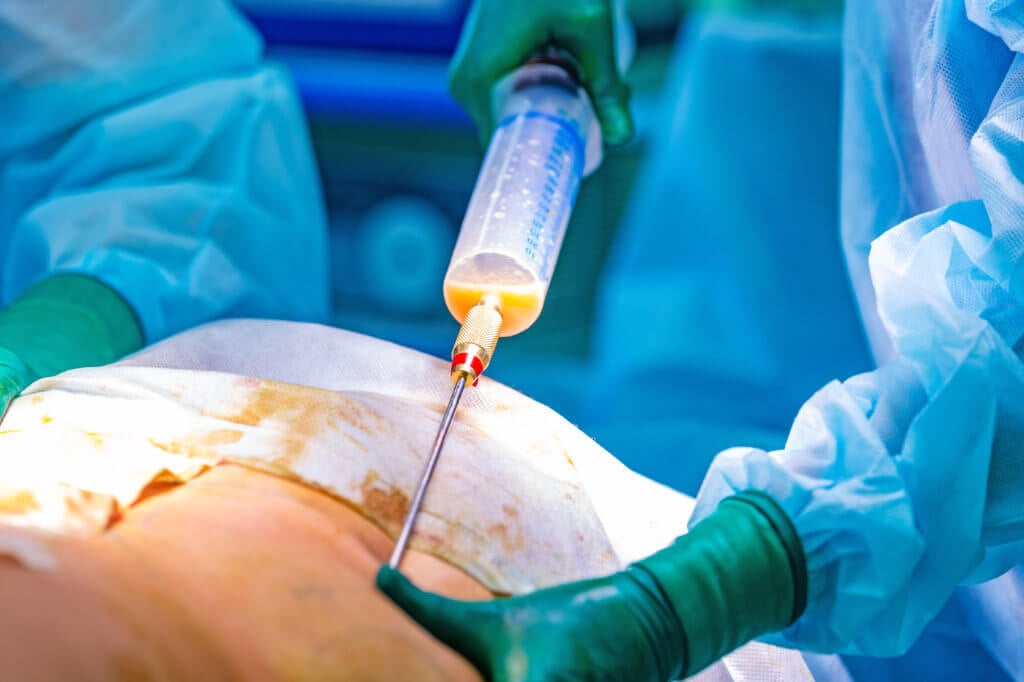Do I want a tummy tuck or liposuction? Can I get both at the same time? How invasive are these procedures?
These questions are commonly asked by individuals considering a cosmetic procedure on the abdomen. While both are used on the same area of the body, they use different methods that provide distinct results. Keep reading to gain a basic understanding of the similarities and differences between a tummy tuck and liposuction.
Liposuction
Traditional liposuction is generally recommended for those who have a difficult time removing excess fat through conventional practices like diet and exercise. Ideal candidates are within 20 pounds of their target body weight, are not pregnant or breastfeeding, and have not had any history of rapid weight loss. Once certain she will not have any more children, a woman can once again become eligible for liposuction, although most surgeons would suggest a tummy tuck.
The liposuction procedure involves small incisions being made on the area containing excess fat. In the case of abdominal liposuction, the targeted fat is located between the skin and the stomach wall. The goal is to not only suck the fat from the region but also to sculpt it to create a proportionate and naturally contoured look.

The most popular areas people target with liposuction include the abdomen, inner and outer thighs, hips, waistline, and arms. Part of the benefits of this procedure is that liposuction involves less scarring and a shorter period of downtime compared with a tummy tuck. A tummy tuck, however, offers a more reliable solution for concerns related to excess or stretch marks around the stomach,
Tummy Tuck
Tummy Tucks are best for those looking to improve the look of loose skin on their abdominal area or stretch marks due to pregnancy or obesity. Liposuction often leaves patients with saggy skin, so a tummy tuck can help address these side effects.
The procedure begins with the surgeon making an incision right above the pubic area, from one side of the hip to another. They will then lift excess skin and fat off the belly’s surface, and ultimately pull the remaining skin tight to produce a flat stomach. This procedure is usually more invasive than liposuction, meaning patients require general anesthesia that renders them unconscious. Because the abdominal wall gets exposed during the process, stitches are also used to ensure a smooth recovery.
For candidates who recently received liposuction, some can endure a limited amount of excess skin in the abdominal area. Others, meanwhile, feel it is necessary to take care of this flab. For that reason, those who think they need a tummy tuck are advised to get liposuction, and later wait for 3 to 4 months to see how they feel with their results.
During the first months after liposuction, the swelling will subside while the skin begins to shrink slowly. Younger patients or those who have not gone through rapid weight gain/loss have the best elasticity, meaning they are less likely to require a tummy tuck.


1 comment
Comparing and Contrasting Liposuction and Tummy Tucks article is well written and has helped me a lot.